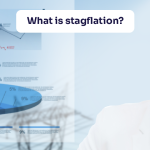Investing in mutual funds offers a variety of opportunities for investors to grow their wealth. One such opportunity is the Sundaram Business Cycle Fund - Regular Plan - Growth, a new fund offer (NFO) that aims to capitalise on the cyclical nature of businesses. This blog will provide an in-depth look at this fund, its investment strategy, and the potential benefits and risks associated with it.
The Sundaram Business Cycle Fund is an open-ended equity scheme that focuses on identifying and investing in companies based on their position within the business cycle. This approach aims to maximise returns by leveraging the cyclical nature of various sectors and companies. This mutual fund investment is designed for growth and is offered under the regular plan.
The primary objective of the Sundaram Business Cycle Fund is to generate capital appreciation by investing predominantly in equity and equity-related instruments, following a business cycle-based investing theme.
The fund’s investment strategy revolves around understanding and leveraging business cycles. Business cycles refer to the fluctuating phases of economic growth and contraction. These cycles impact various sectors differently, and by identifying the phase of the business cycle, the fund aims to invest in sectors and companies poised to perform well in the current phase.
1. Sector Rotation: The fund will dynamically shift its sectoral allocation based on the current phase of the business cycle. For instance, in an expansion phase, the fund might overweight sectors like technology and industrials, while in a contraction phase, it might focus on defensive sectors like healthcare and consumer staples.
2. Stock Selection: Within the chosen sectors, the fund will select companies with strong fundamentals, competitive advantages, and growth potential. The focus will be on companies that are well-positioned to benefit from the prevailing economic conditions.
3. Active Management: The fund manager will actively manage the portfolio, making adjustments based on macroeconomic indicators, market conditions, and business cycle analysis.
1. Business Cycle Approach
The fund’s unique approach to investing based on business cycles can potentially offer higher returns by capitalising on the cyclical nature of economic growth and sector performance.
2. Diversification
By dynamically allocating investments across various sectors, the fund provides diversification, reducing the risk associated with investing in a single sector or a few stocks.
3. Experienced Fund Management
Managed by Ravi Gopalakrishnan, the fund benefits from his extensive experience and expertise in equity markets, which can enhance the fund’s performance through informed decision-making and active management.
4. Potential for Capital Appreciation
With a focus on growth-oriented companies and sectors, the fund aims to achieve substantial capital appreciation over the long term, making it suitable for investors with a higher risk appetite looking for growth opportunities.
1. Market Risk
As an equity fund, the Sundaram Business Cycle Fund is subject to market risks, including volatility in stock prices, economic downturns, and changes in market sentiment.
2. Sector Risk
The fund’s strategy involves sector rotation, which may lead to sector-specific risks. If the fund manager’s sector allocation decisions do not align with market conditions, it could impact the fund’s performance.
3. Active Management Risk
Active management involves frequent buying and selling of securities, which can result in higher transaction costs and may not always lead to better returns compared to passive investment strategies.
4. Business Cycle Misjudgment
Identifying the current phase of the business cycle accurately is challenging. Misjudgment or incorrect timing could result in suboptimal investment decisions and affect the fund’s returns.
The Sundaram Business Cycle Fund - Regular Plan - Growth offers a distinctive approach to equity investing by focusing on business cycles. This strategy, combined with active management and sector rotation, aims to deliver superior returns by capitalising on the cyclical nature of different sectors and companies. While the fund presents potential for capital appreciation and diversification, investors should be aware of the inherent market, sector, and active management risks. It is advisable for investors to assess their risk tolerance, investment horizon, and financial goals before investing in this NFO.
By understanding the unique aspects of the Sundaram Business Cycle Fund, investors can make informed decisions and potentially benefit from the opportunities this fund aims to provide in the ever-evolving market landscape.

Revisiting the Gold-Silver Ratio Amid Silver's Outperformance
3 min Read Dec 22, 2025
Midcaps: Sweet Spot or Danger Zone? | What HSBC MF’s Cheenu Gupta Thinks | Ventura Spotlight
3 min Read Dec 17, 2025
Understanding Option Pin risk near expiry
3 min Read Dec 12, 2025
EPS in the Stock Market
3 min Read Dec 12, 2025
What is stagflation?
3 min Read Dec 10, 2025